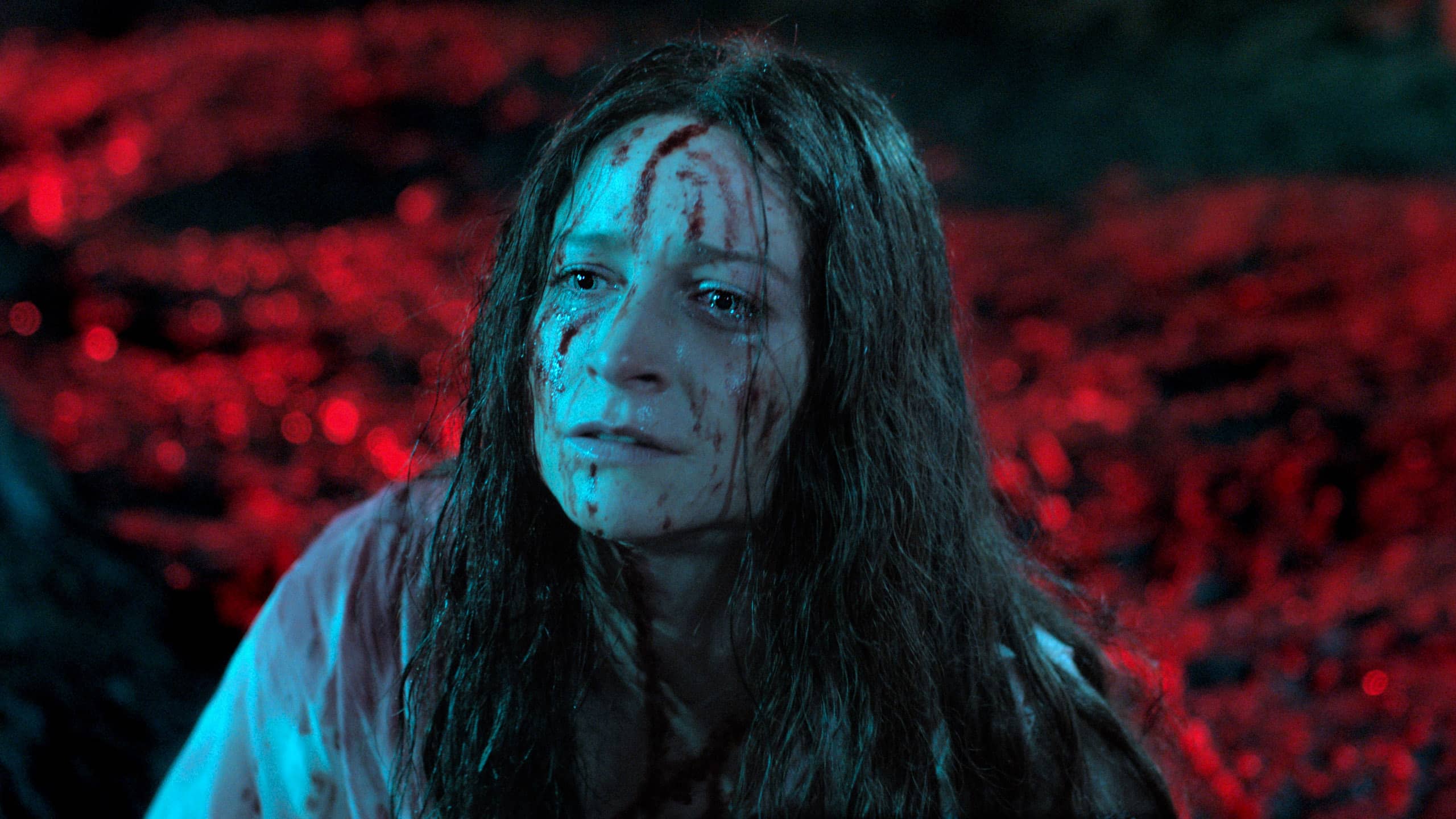Photo courtesy of Silver Salt Films
Author: Marisa Reyes-Pacheco
As someone who obsesses over the horror genre, it was my duty to watch every film in the Midnight category at Sundance. Censor directed by Prano Bailey-Bond had a interesting storyline that I have not seen used yet, which focused on Enid (Niamh Algar), a horror movie/film censor, who slowly loses her grip on reality and the actuality of events surrounding her sister’s disappearance when they were children, which Enid cannot remember. I honestly never really thought about how a film censor could be a career before this film, so it was refreshing to see a new idea put out into the horror film world — often, I find it hard to keep my attention on horror films that repeat the same scenarios or stereotypes (ghost stories, haunted houses, etc.). With this fresh premise from Bailey-Bond, I had no idea where this story would take me or what to expect from it, which made it exciting to sit and bask in the experience.
The film features Enid (Niamh Algar) and her colleague watching many VHS “video nasties,” which refer to horror films from Britain in the 1980s that were deemed to expose impressionable audiences to violent, mimicable behavior that should be seen as immoral. I enjoyed the moments of viewing these “nasties,” as the audience viewed them in first person on 35mm film. I set up a projector in my room for Sundance, so I was super excited that this was the first film of my Sundance experience — felt very worth it to watch the film this way, if anyone is able to view it a second time! I have always enjoyed films that have a film within a film, and the nasties were very 80’s-esque, so the careful articulation and homage to horror showcased the filmmaker’s own love for the genre and dedication to showcasing the things she valued most about it.
Something I did notice throughout the film was the lack of gore and violence. There was some blood when certain situations called for it, but I found myself wondering why there were so many gore/violence warnings at the beginning of the film when most of the opportunities Bailey-Bond could have taken to give horror fans a scarier movie seemed to be skipped over in the name of censorship. This also calls into the question the true intention of the film: Censor, a film about a film censor trying to “protect” (as Enid states) the public, censored herself from processing the trauma of whatever happened the day of her sister’s disappearance, is trying to censor its audience from the gore and violence they may crave or think they need to enjoy their experience. I see how they were trying to play with the overall idea of censorship and how it impacts people differently, and also touched on cancel culture with the backlash Enid faced after a real-life incident took place after a film she viewed was released, but I just feel like the film could have benefitted from showing more horrific things to really get the audience into the same mindset as Enid. It felt like the film was made for the audience to observe Enid, not to really experience this ordeal with Enid, which made it lack a stronger emotional connection.
Upon viewing a video nasty called Don’t Go in The Church, Enid has some sort of revelation about her own past while watching it. After her parents discuss officially declaring her missing sister dead, Enid makes it her mission to get answers and hunts down the filmmakers and cast of the video nasty that eerily reminded her so much of herself and her sister on that forgotten day. In her psychosis, Enid fully believes the actress is her long lost sister, and that she no longer has to hold herself accountable for her sister’s disappearance. Enid acts erratically, doing some things that she would have definitely censored had she saw herself on tape in order to “protect her sister,” and overall becoming the character of the “final girl” horror trope as she faced her rude awakening in a blood stained dress, crying on the ground with no memory or trail of clues to find her sister. The way so much suffering is showcased in just one character who was once made to be so well put together is astonishing in Niamh Algar’s performance, as the pain of a child mourning another child is not often discussed in horror.
The way pain, trauma and censorship are discussed and showcased in this film are necessary and I appreciated the beauty of the cinematography, the sound, and the actor’s performances. I feel like I would have enjoyed this film a lot more as a horror if there was more violence and gore included, even though I usually stay away from gore and blood. It felt like it was at least a little necessary somewhere in this film, and that something was missing. I’m not sure if blood would solve this mystery of the missing piece for Prano Bailey-Bond, but overall I did enjoy the originality of the film and the different techniques that were used to ensure a beautiful execution. I will definitely be watching it again as soon as I can get my hands on it!
Marisa Reyes-Pacheco | if there’s not blood, I don’t want it | KXSU Senior Arts Editor

